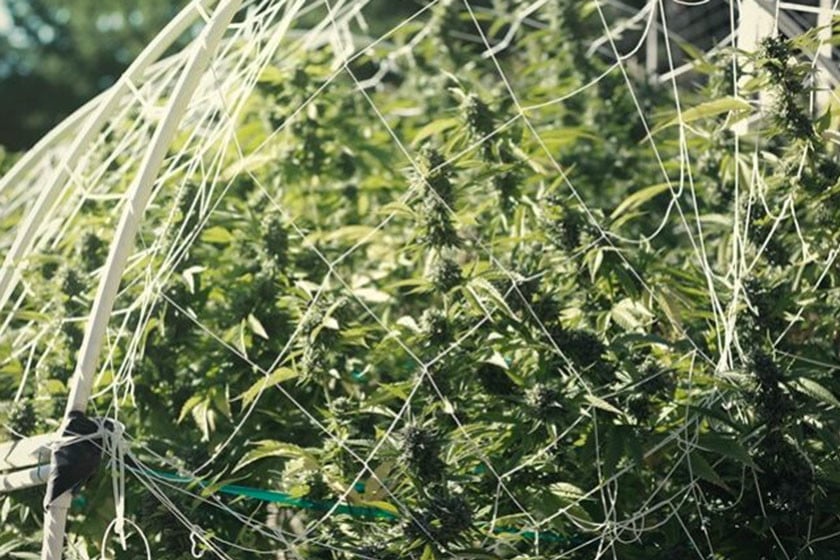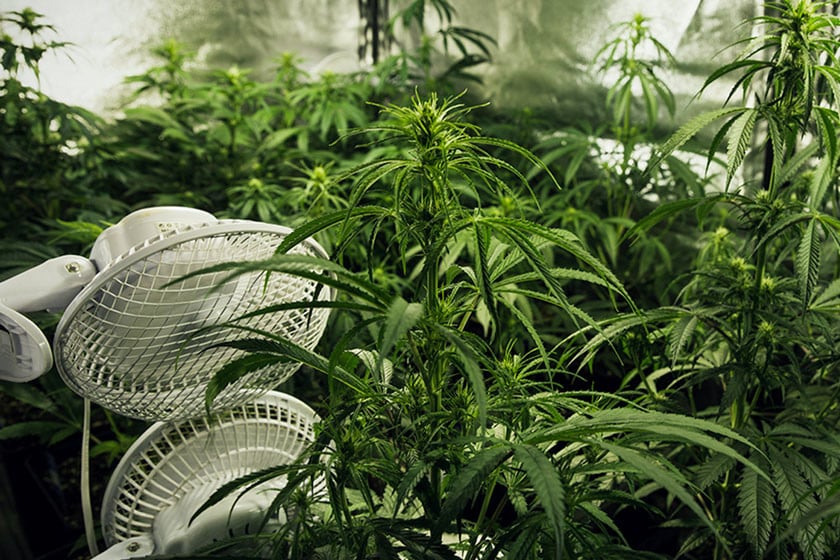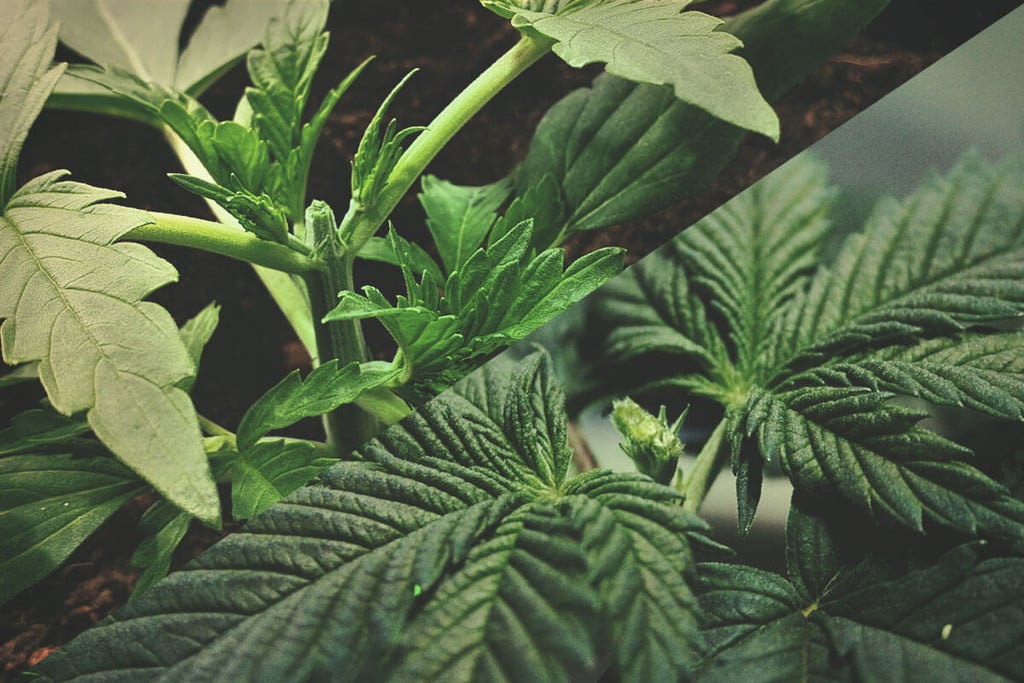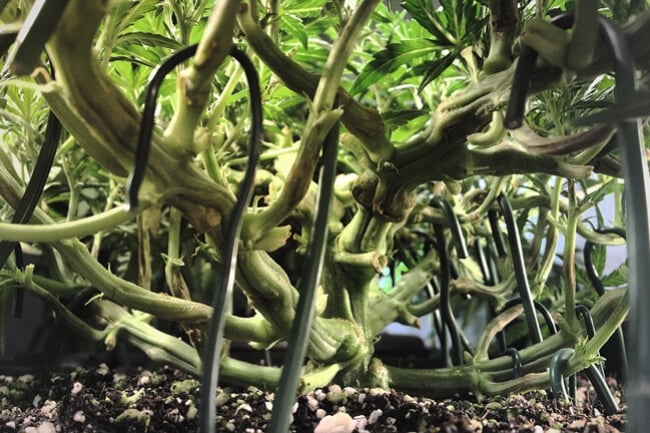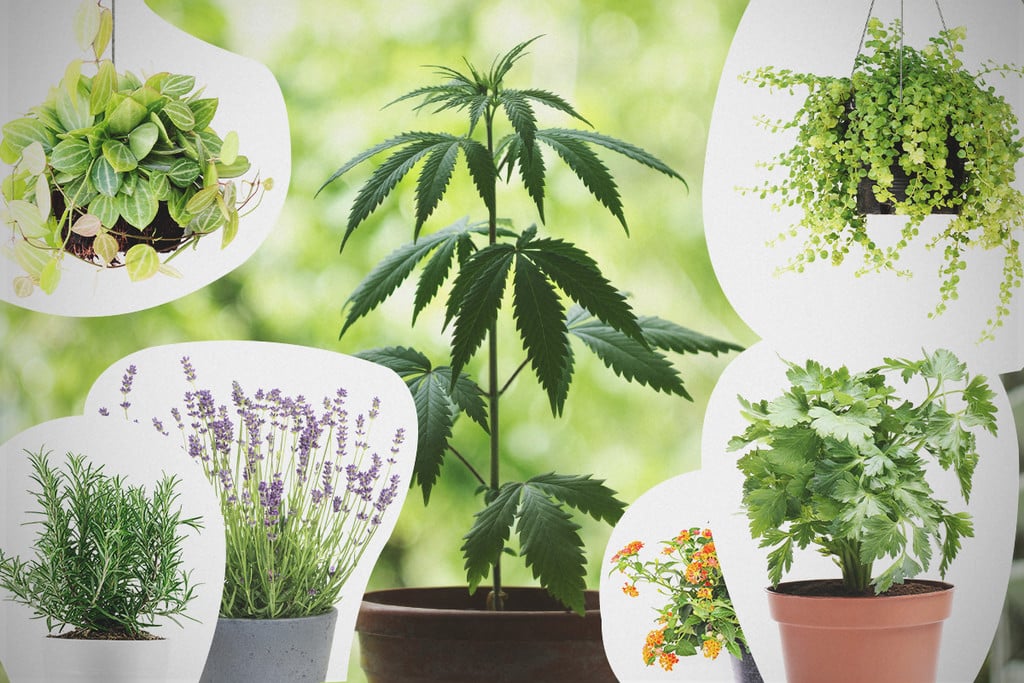.

Weed & Wind Burn: Protecting Your Cannabis From Wind Damage
Thinking ahead to protect your cannabis from wind damage avoids the heartbreak of destroyed plants after heavy storms. Protecting your plants is easy. With a bit of forethought and minimum expenditure, you can be guaranteed nuggets in the jar—no matter the weather.
Contents:
Wind is your frenemy. Moving air provides numerous benefits for cannabis. It helps with continuous gas exchange at the leaf stomata. Furthermore, a stiff breeze causing the plant to sway and bend causes beneficial micro-injuries in the stem and stalks. The plant responds with more vigorous growth and becomes stronger as extra tissues form as reinforcement.
However, when getting thrashed by strong winds, gales, and storms, cannabis can become badly damaged. Plants can be uprooted or autumn over completely. Branches can be broken or stalks snapped clean through. Leaves can be shredded and swollen central colas that are in heavy flower can break irreparably.
Is wind bad for cannabis plants? No, but too much wind can cause serious problems. Not only can strong gusts snap stems and damage leaves, but consistent breezes can “burn” plant tissue. Wind burn occurs when excessive airflow ramps up transpiration rates and causes undesirable water loss. This results in a loss of turgidity and shrivelled, curled-up leaves.
Protecting and reinforcing plants against such heartbreaking happenings is easy and inexpensive. It is better to plan for the worst and hope for the best when maintaining your delicious cannabis plants. Following these few simple tips will make sure your weed is windproof in all but the fiercest cyclonic conditions.
Symptoms of Wind Burn in Cannabis
What does wind burn look like, exactly? Your marijuana plants will develop distinct symptoms of the condition after sitting outdoors in heavy gusts, or indoors in front of overly powerful fans. The main symptoms of cannabis wind burn include:
- Clawing
- Stunted growth
- Smaller buds and poor yields
- Yellow, brown, and bronze markings on leaves
You can differentiate wind burn from watering issues and nitrogen toxicity by examining where the condition occurs. If the leaves near your fan are affected while those further away aren’t, you’re looking at wind burn.

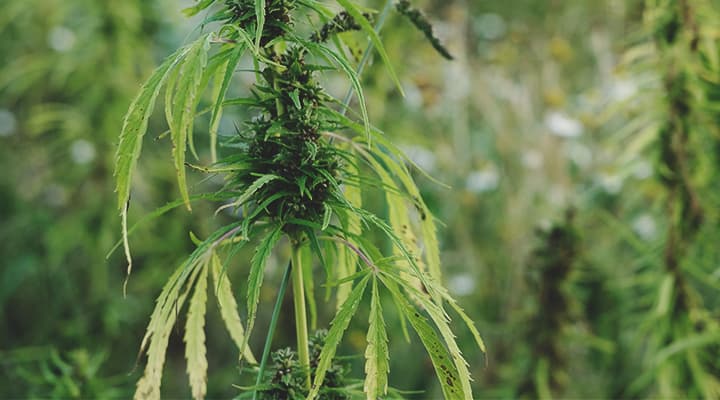
Can Weed Plants Recover From Wind Burn?
It depends on the severity of the situation. Plants are more likely to recover indoors where you have full control over environmental conditions. If you catch the symptoms early enough, you can make the changes detailed below to rescue them. Plants will attempt to rescue damaged leaves by diverting nutrients to them. However, you’ll have to defoliate those that are beyond repair. Things get a little trickier outdoors, but there is plenty you can do to intervene.
Ultimately, neglected cannabis plants grown in unfavourable conditions will eventually topple and perish from wind burn as they lose critical turgidity.
How To Protect Cannabis Plants From Wind Burn
Preventing wind burn beats trying to fix it! Below, you’ll find out how to prevent and remedy wind burn indoors and outdoors.
Preventing Cannabis Wind Burn Indoors
Use these simple tips to prevent cannabis wind burn indoors:
| Fan placement | Place your fans at opposing ends of your grow tent, facing the wall. This will help to circulate air without directing a breeze at your plants. |
| Oscillating fans | These fans move from side to side. You can position them to face your plants—at an adequate distance—without the risk of constant airflow causing wind damage. |
| Fan placement | Place your fans at opposing ends of your grow tent, facing the wall. This will help to circulate air without directing a breeze at your plants. |
| Oscillating fans | These fans move from side to side. You can position them to face your plants—at an adequate distance—without the risk of constant airflow causing wind damage. |
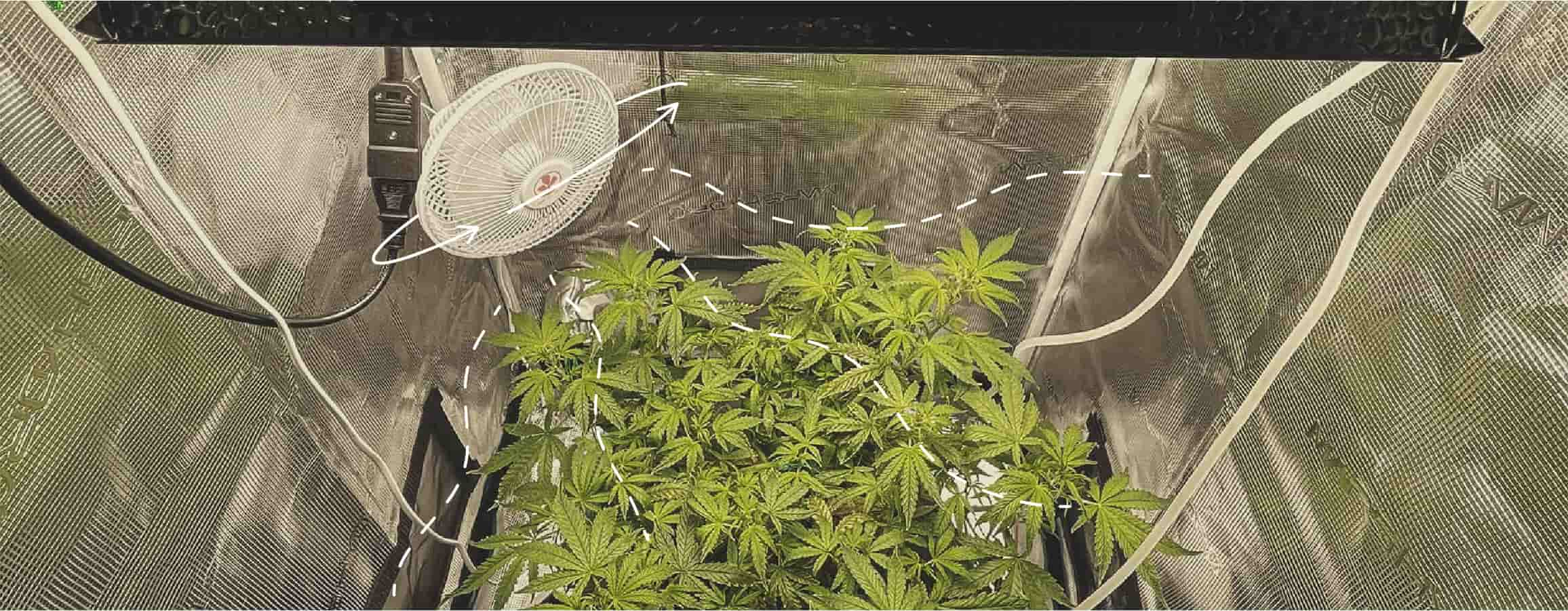
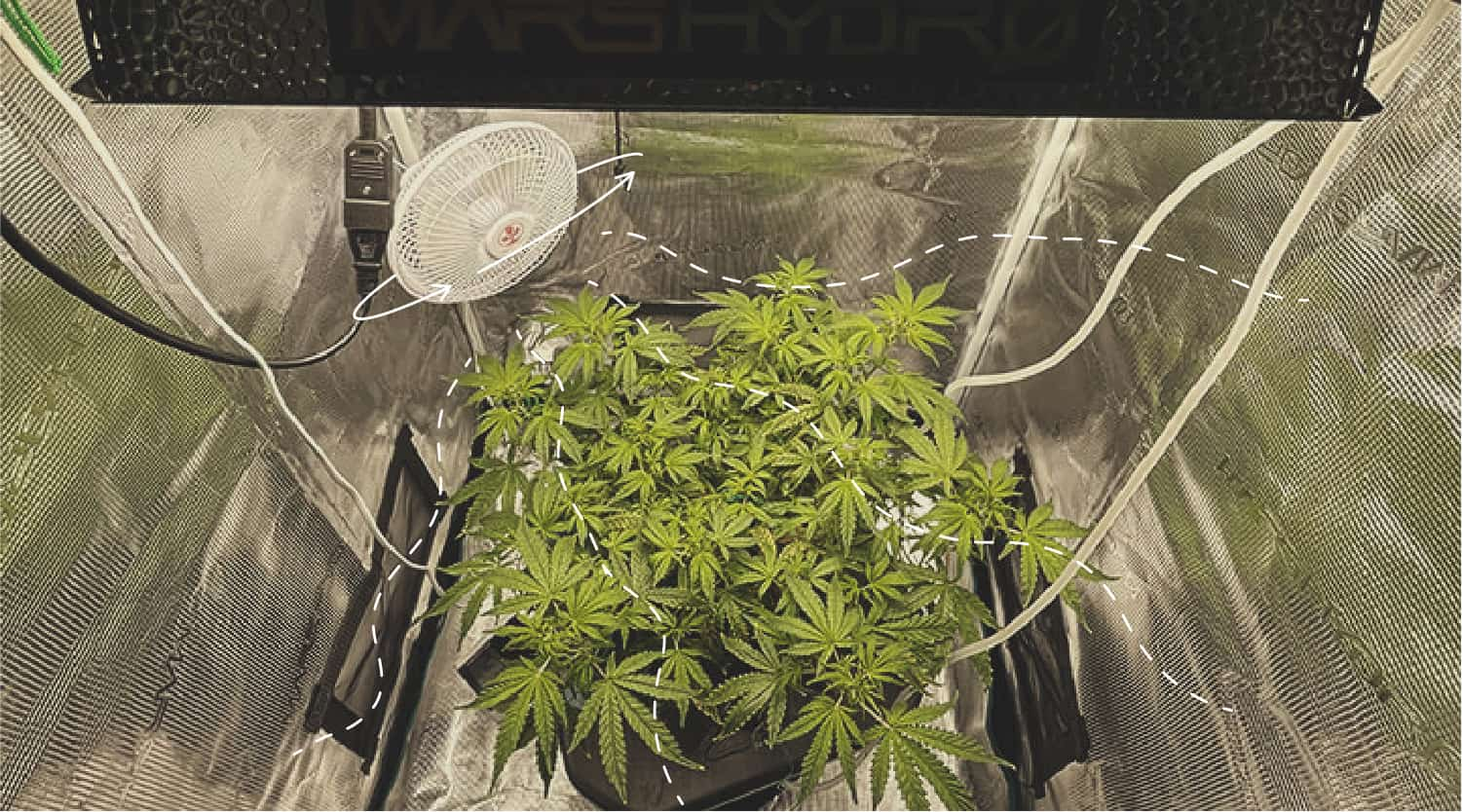
Fixing Cannabis Wind Burn Indoors
If you failed to take preventative measures (you’ll know for next time), use these methods to rescue your cannabis plants:
| Reposition your fans | Move your fans away from your canopies and turn them to face the grow tent walls. |
| Change the power settings | Your plants don’t need to sit in a simulated storm. If you notice signs of wind burn, crank down the power settings. |
| Defoliate | Cut away injured leaves to help your plant recover faster and direct precious resources toward new, uninjured growth. |
| Reposition your fans | Move your fans away from your canopies and turn them to face the grow tent walls. |
| Change the power settings | Your plants don’t need to sit in a simulated storm. If you notice signs of wind burn, crank down the power settings. |
| Defoliate | Cut away injured leaves to help your plant recover faster and direct precious resources toward new, uninjured growth. |
Preventing Cannabis Wind Burn Outdoors
It is generally inadvisable to rigidly secure cannabis in any way. Some flexibility allows the plant some natural motion. This will prevent, for example, stakes being pulled out or cages being blown away with your weed.
You have less control over the environment outdoors, but there are several things you can do to prevent wind burn:
| Greenhouses and polytunnels | If you have the luxury, these growing environments provide all the benefits of growing outdoors, just with extra protection. |
| Find a sheltered spot | Start your grow in a sheltered area of your garden surrounded by hedges, trees, or taller plants. Just be mindful about light exposure; south-facing positions work best. |
| Use trellises | Trellises and plant cages work to protect weed plants against strong winds. They won’t do much in the way of wind burn itself, but they’ll help to prevent broken stems. |
| Top and trim plants | Keep your outdoor plants topped and trimmed to lower the canopy and create a more protective shape. |
| Greenhouses and polytunnels | If you have the luxury, these growing environments provide all the benefits of growing outdoors, just with extra protection. |
| Find a sheltered spot |
Start your grow in a sheltered area of your garden surrounded by hedges, trees, or taller plants. Just be mindful about light exposure; south-facing positions work best. |
| Use trellises | Trellises and plant cages work to protect weed plants against strong winds. They won’t do much in the way of wind burn itself, but they’ll help to prevent broken stems. |
| Top and trim plants | Keep your outdoor plants topped and trimmed to lower the canopy and create a more protective shape. |
Fixing Cannabis Wind Burn Outdoors
Did wind burn get the better of you outdoors? Use these techniques to turn things around:
| Relocate | If you’re growing in containers, simply relocate your plants to a more sheltered spot until conditions improve. |
| Use a windbreak | If your plants are rooted in the ground, erect a temporary windbreak while the adverse weather continues, to prevent further damage. |
| Defoliate | Snip away any damaged and deformed leaves to help your plant bounce back from the brink. |
| Relocate | If you’re growing in containers, simply relocate your plants to a more sheltered spot until conditions improve. |
| Use a windbreak | If your plants are rooted in the ground, erect a temporary windbreak while the adverse weather continues, to prevent further damage. |
| Defoliate | Snip away any damaged and deformed leaves to help your plant bounce back from the brink. |
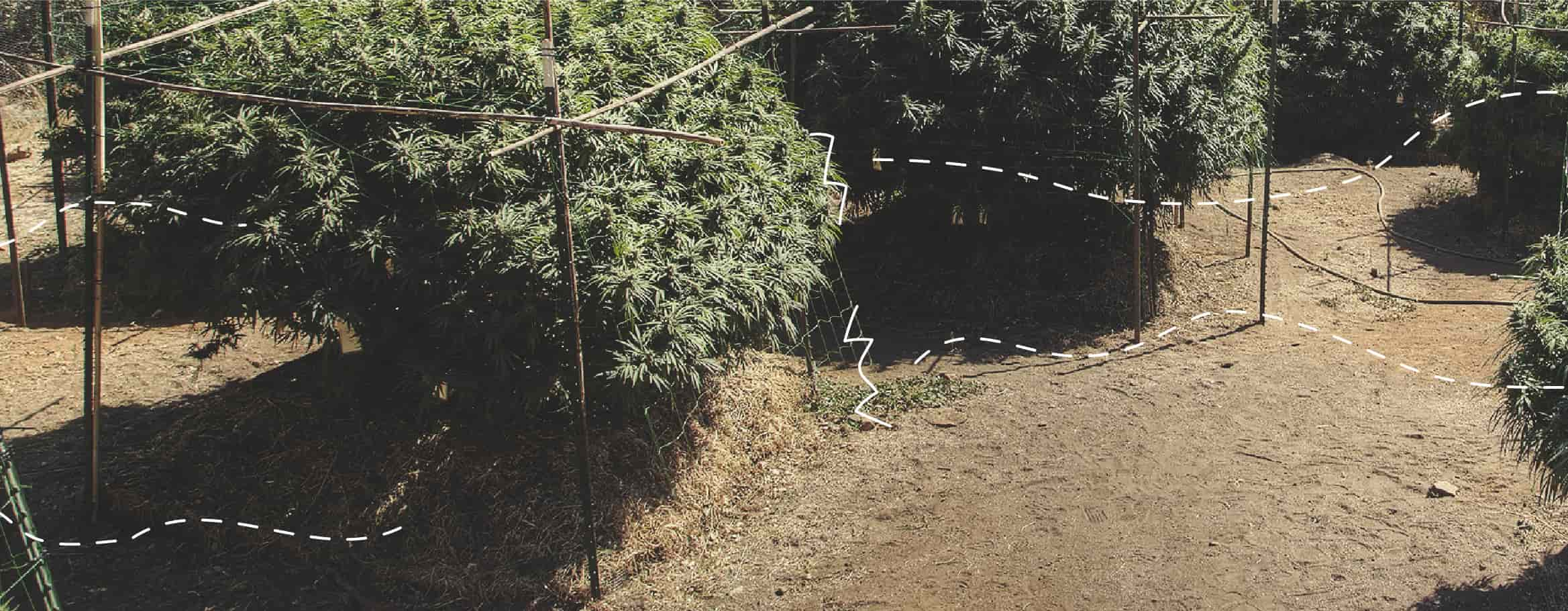
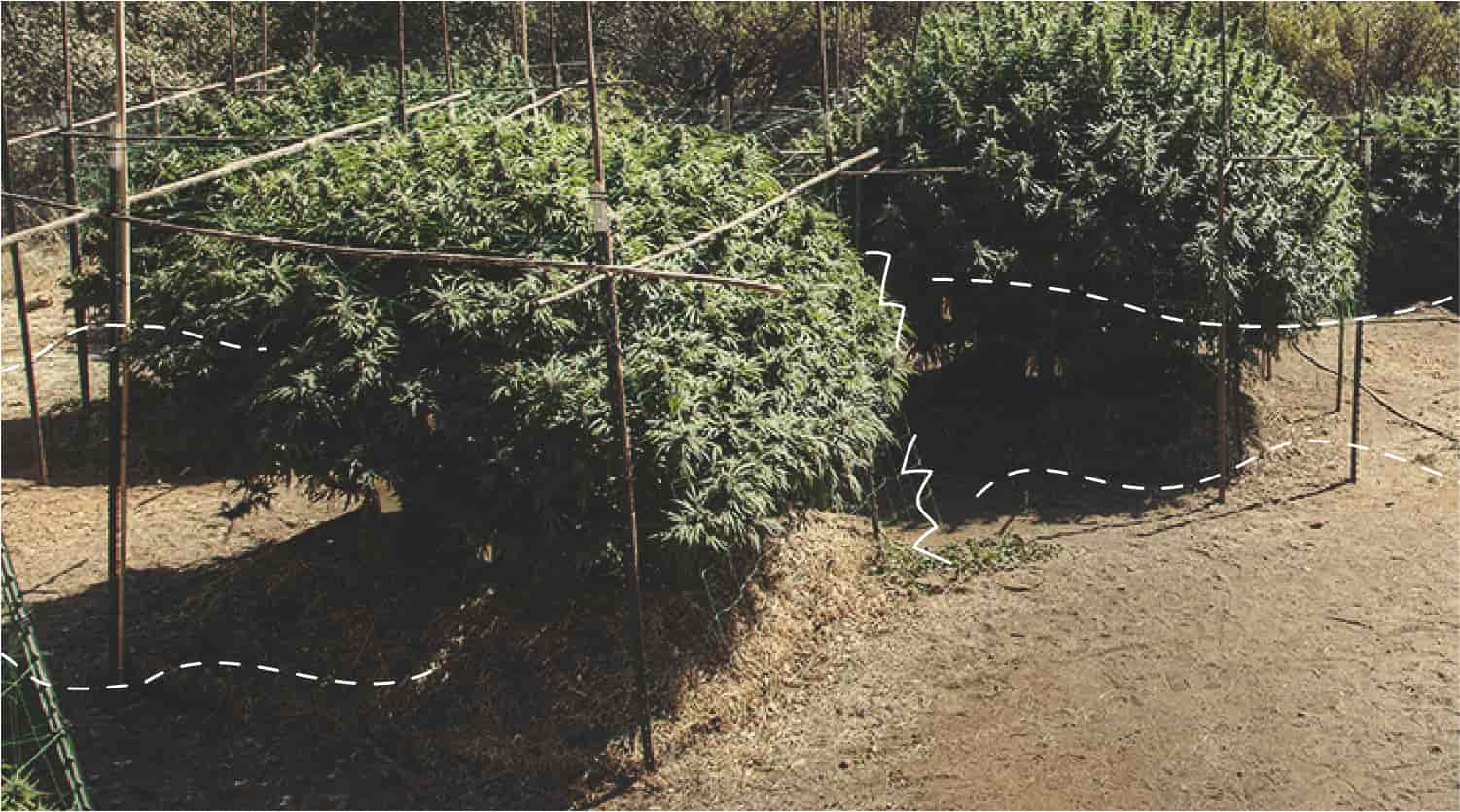
What To Do if a Stem Breaks?
Wind burn sucks, but broken stems have a much more severe prognosis. Although a dire injury, cannabis plants have an impressive capacity to recover. Know that you can easily fix a broken stem if you act fast enough.


























